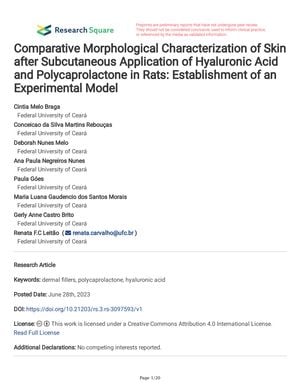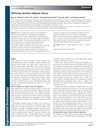Comparative Morphological Characterization of Skin after Subcutaneous Application of Hyaluronic Acid and Polycaprolactone in Rats: Establishment of an Experimental Model
June 2023
in “
Research Square (Research Square)
”
hyaluronic acid polycaprolactone skin morphology fibroblastic activity tissue regeneration cell proliferation neovascularization collagen deposition macrophages TGF-B FGF tissue repair subcutaneous fillers fibrosis HA PCL skin structure cell growth new blood vessels collagen formation immune cells transforming growth factor-beta fibroblast growth factor skin fillers scar tissue

TLDR Hyaluronic acid and polycaprolactone improve skin regeneration, with polycaprolactone having a stronger effect on healing and tissue repair.
The study used 16 male Wistar rats to establish an experimental model for assessing the effects of hyaluronic acid (HA) and polycaprolactone (PCL) on skin morphology and cellular response. The rats were divided into groups and euthanized at 30 and 60 days for analysis. The results indicated that both HA and PCL are biocompatible and stimulate fibroblastic activity and tissue regeneration, with PCL having a more pronounced effect on cell proliferation, neovascularization, and collagen deposition. PCL also led to a significant increase in macrophages, TGF-B, and FGF expression, suggesting a more active role in tissue repair. The study concluded that the model is effective for analyzing the impact of subcutaneous fillers, with PCL showing greater potential for aesthetic applications due to its fibrosis and neovascularization properties. The study included 6 animals per group and used ANOVA followed by Tukey's test for statistical analysis, with a p-value of < 0.001 indicating significant differences.

